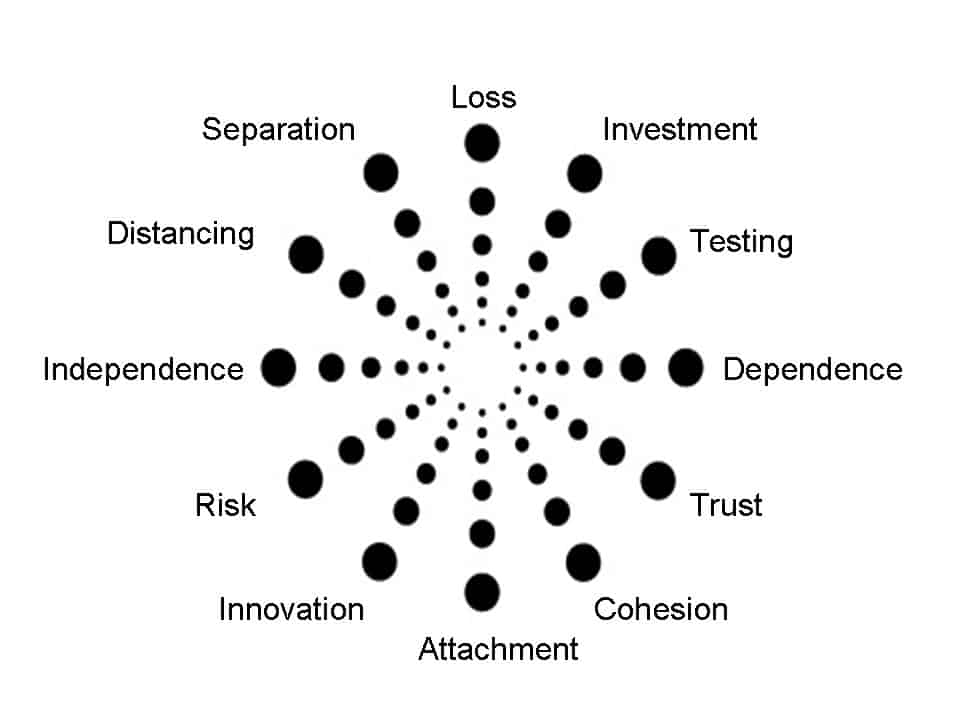This is the Team Clock®. Take a quick walk around the cycle of team growth.
12:00-6:00
The 12:00 spot on the clock represents a significant change. At 1:00, teammates re-invest in a vision and some basic norms that shape the way work gets done. At 2:00, the team tests out their new circumstances before committing to move forward together by a common set of ground rules. At 3:00, teammates lock their future together toward a shared mission. At 4:00, trust strengthens as partners stay true to team values and goals. At 5:00, the team enjoys the cohesiveness that many describe as “all for one, one for all.” At 6:00, group attachment allows everyone to feel connected and moving in the same direction.
6:00-12:00
Attachment at 6:00 provides a platform of accountability and psychological safety for the team to explore, discover and create new pathways to solve new problems. At 7:00, teammates harness their commitment to the vision to support innovation. At 8:00, the risk tolerance they have earned allows for the trial and error needed to adapt to the next round of change. At 9:00, teamwork shifts to independence and triggers the next round of disruption. At 10:00, teammates distance themselves from the way it used to be in order to get perspective on the magnitude of change they are facing. At 11:00, the team experiences separation from previous rhythms and must find a way to let go. At 12:00, teammates mourn the loss and begin to accept the conditions of their new circumstances.
And the cycle begins anew. The team adjusts to the disruption and rebuilds the foundation to support the next round of growth. Significant change is seen as a natural phase of a repeating cycle rather than a disabling tragedy. Constant adaptation becomes the norm that holds the team together when everything is falling part. Fortunately, everyone is capable of this ability to adapt; more so when we work to support each other in this process.


